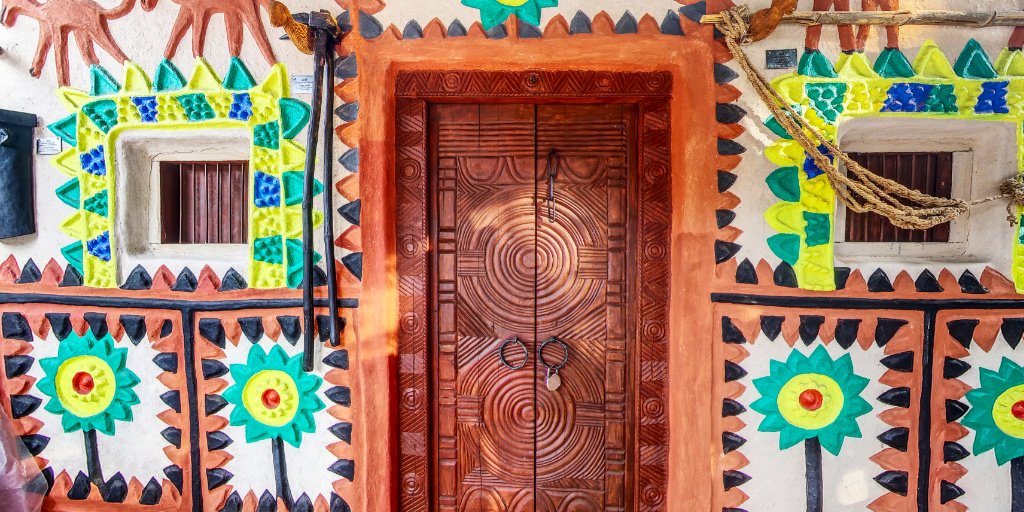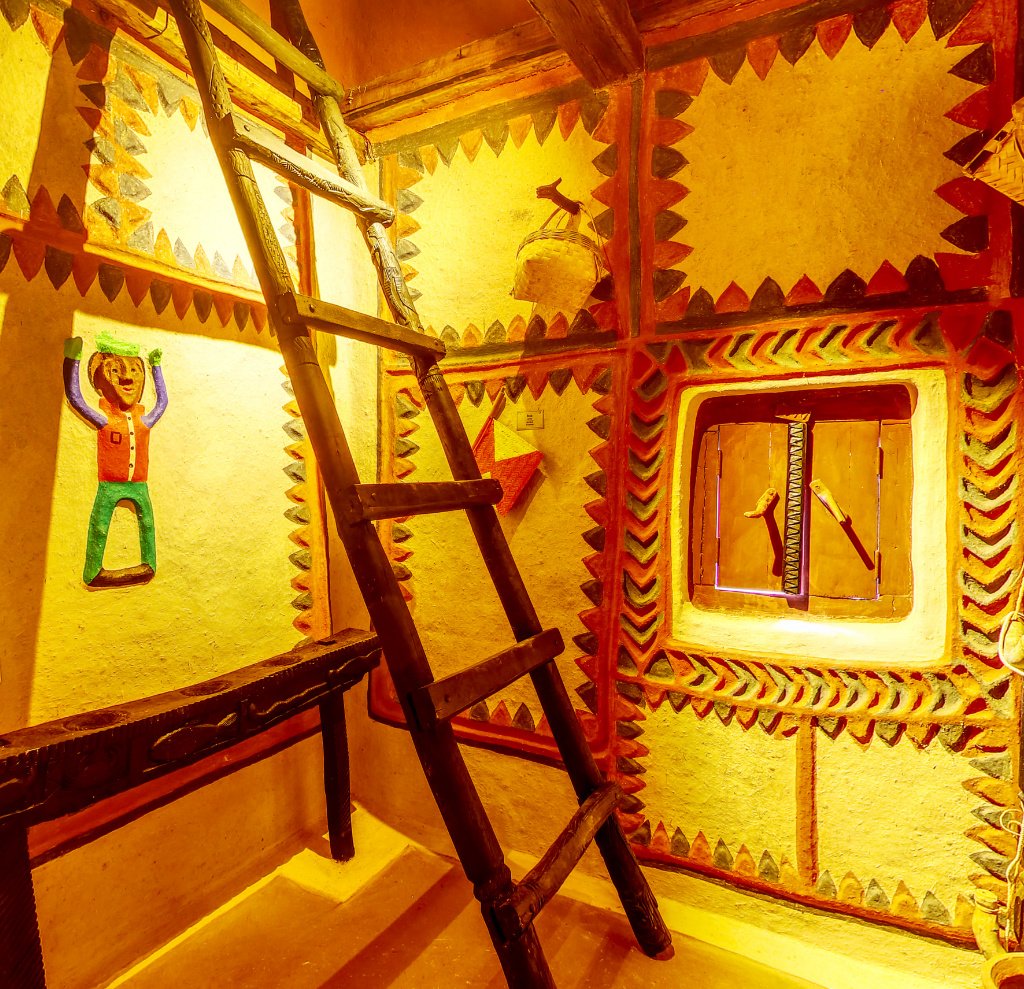HOUSE OF BAIGA
In the old Baiga tolas (colony), all the houses were built around a central empty space, that means, all the houses had a combined kharna or courtyard, in the middle of this courtyard, a bonfire was lit in the evening. This way of colony settlement is not in vouge now.
The traditional Baiga house consists of one or two rooms with a gabled roof. A fence made of Sachchar- wood surrounding the courtyard and the house is called 'Parda’. Baigas live close to forests and build strong high fences to protect them from wild animals.
The walls of the house were earlier made of chirra, anheda, ravai or bamboo sticks, which were plastered with mud from inside. Now often the walls are made of mud or brick. The roof was also earlier made with Chirra or Mova grass or Chhindi leaves, which are now made from Kavelu.
As you enter a baiga house you may find a water pot called ‘Padhenda’ in front of you and a big bamboo-clay pot 'Khoodari' for keeping grains, pulses and salt, a 'chulha-bartan’ (stove) on right side and some tools on left side in the house.
In these houses, the workmanship of men on the wooden doors and door frames and the aesthetic sense of women shining in the clay on the walls is often seen.

